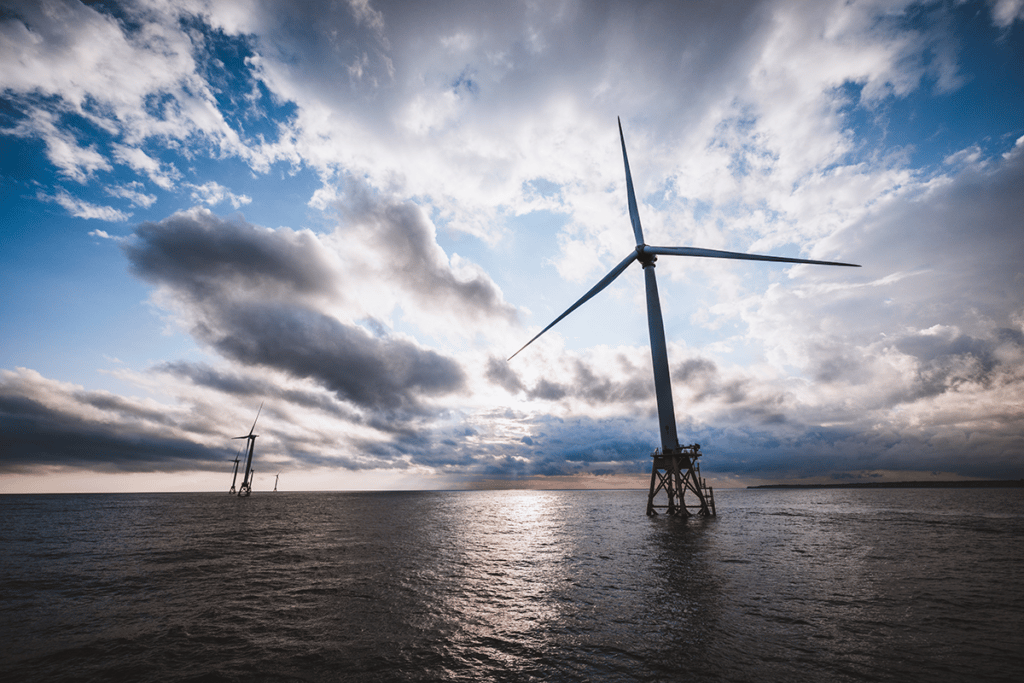
Maine Audubon continues our work to support the development of clean, renewable energy in the Gulf of Maine while playing a critical role to ensure the avoidance or minimization of impacts to wildlife and habitat. In recent months we’ve released a report on potential impacts to wildlife from offshore wind in the Gulf and strategies to mitigate those impacts, and advocated on behalf of the environment as a part of state offshore wind legislation and in federal administrative processes.
We wanted to update you on the submission of a pair of comments recently submitted in the latter category, as part of the Bureau of Ocean Energy Management’s, or BOEM’s, efforts to identify the location of offshore wind energy development in the Gulf of Maine and assess the potential environmental impacts of the State of Maine’s proposed research array.
BOEM recently announced its plan to prepare a document called an Environmental Assessment to consider the reasonably-foreseeable environmental consequences of a lease for an offshore wind research array in the Gulf, as proposed by the State of Maine. Maine Audubon joined with Maine Conservation Voters, Massachusetts Audubon, the National Audubon Society, and the Natural Resources Council of Maine to submit comments ahead of the Environmental Assessment to help alert BOEM to which environmental impacts it should be sure to study.
Our joint comments were submitted on June 4. We requested BOEM take a specific look at a variety of potential environmental impacts. The non-exhaustive list of impacts we requested to be considered includes:
- Impacts to birds through collision and/or displacement, changes to local food sources for birds associated with changes in the water column or through the creation of artificial reefs, including Gulf-nesting seabirds and migrants passing overhead;
- Effects on seafloor habitats and species caused by the cable anchoring technology;
- Impacts from new structures in the water column;
- The potential impacts from associated electromagnetic fields (EMF);
- Effects on bats that are sometimes attracted to wind turbines;
- Impacts to marine mammals and sea turtles, including secondary entanglement from marine debris and noise; and
- Impacts associated with the creation of the transmission system, including landfall and connection to the onshore grid.
The coalition recommended these impacts be studied with a variety of specific survey methods, as well as preliminary baseline monitoring. These studies are expected to take a number of years, and should continue through the life of the lease. Maine Audubon and the other signers will have additional opportunities to relay these comments to BOEM throughout the process. Read the final comments here.
Maine Audubon authored another set of comments to BOEM on June 12, this time in response to the agency’s request for information about the “Call Area” in the Gulf of Maine. “Call Areas” are large areas of federally-owned waters that BOEM will narrow down into smaller areas for potential leasing for commercial offshore wind projects. The agency requests information from interested parties, like Maine Audubon and other stakeholders, to help them identify areas within the Call Area to avoid or prioritize for leasing.
Maine Audubon was happy to oblige, and were joined again by Maine Conservation Voters, Massachusetts Audubon, the National Audubon Society, and the Natural Resources Council of Maine on our letter. The group made a number of recommendations both to help BOEM identify important areas to avoid, and to indicate where more information is needed before final decisions could be made.
It’s a long and technical set of comments (read them here), and it starts with a general call for more data about how certain wildlife species use the Gulf. Though our understanding is improving all the time, we still lack comprehensive data on when and where birds, bats, fish, marine mammals, use the Gulf. We recommended conducting a number of additional wildlife studies in order to facilitate better decision-making, similar to successful bird surveys recently conducted in the Gulf of Mexico.
Similarly, we recommended a number of specific areas within the Gulf that require additional study. For example, we recommended two geographic areas – Platts Bank and the waters near Georges Bank – as areas to potentially avoid due to high wildlife values, and also advised avoiding the Atlantic Large Whale Take Reduction Plan Restricted Areas to protect those mammals.
Additionally, we suggested a suite of areas with conflicting uses and that may be less suitable for wind energy development. Those areas include habitat areas that may require special attention during siting and construction, like foraging areas for nesting seabirds and similar areas important to wildlife seasonally; new areas that may be increasingly used by wildlife as the climate of the Gulf continues to change; areas that may be limited due to undersea cable connections; and more.
Finally, our coalition asks that BOEM consider potential cumulative impacts to migratory and other wildlife species in the siting, number, and configuration of the Wind Energy Areas. Offshore wind is critical to meeting our renewable energy goals and reducing our dependence on foreign fossil fuels, but we must make sure it’s done right and that the wildlife that calls the Gulf home is protected. Maine Audubon looks forward to continuing our advocacy on behalf of safe and effective renewable energy in the Gulf of Maine.
